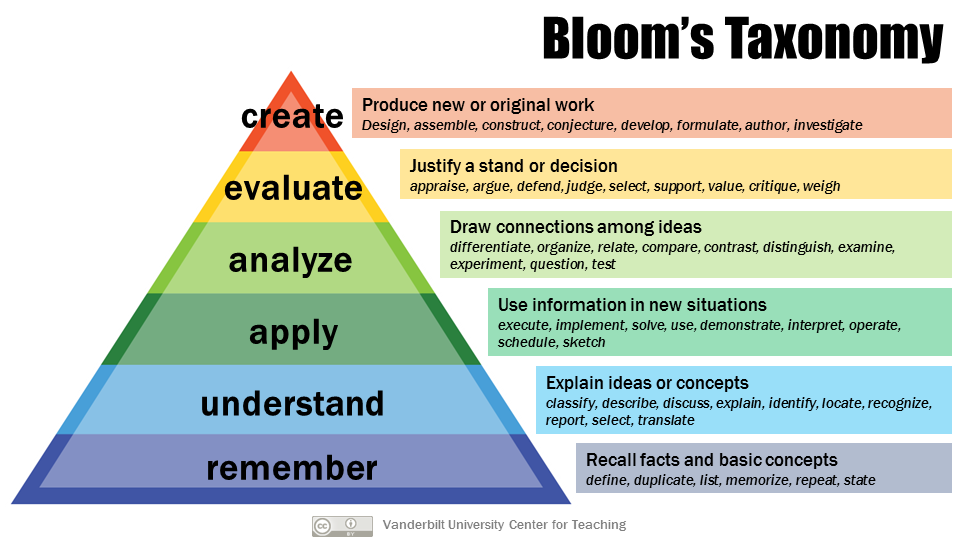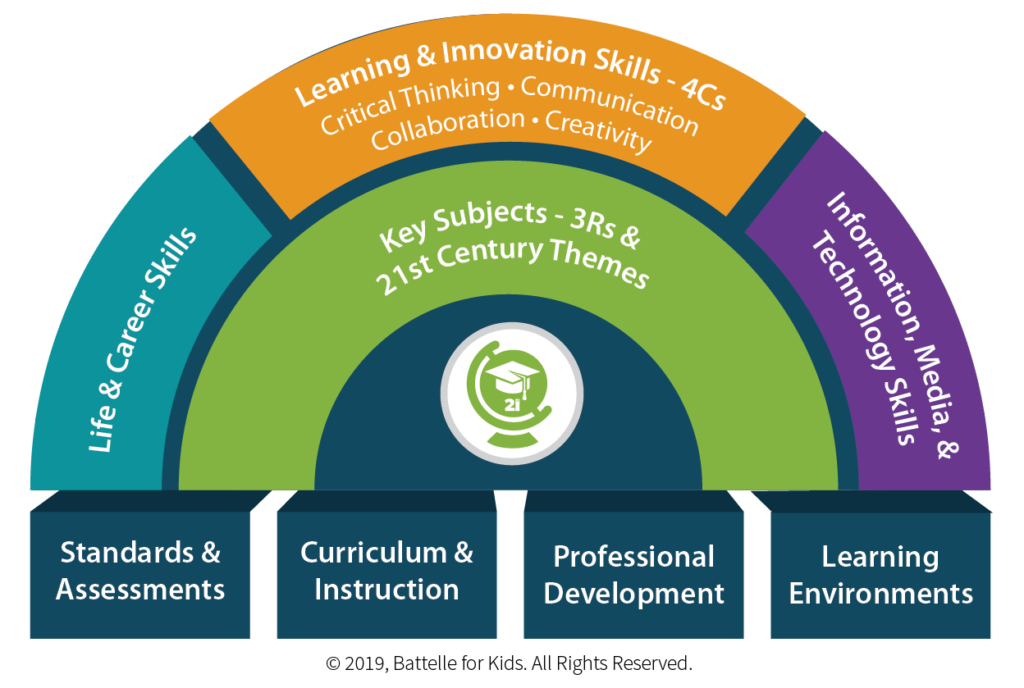What Does it Mean to Teach Thinking?
FEBRUARY 19, 2020
Everyone seems to agree that critical thinking is, well, critical for success in the 21st century. But many of our students are still lagging behind in higher-order thinking skills such as evaluation, analysis, synthesis, and creativity. Could the problem lie in the way we're teaching thinking?
Teachers are often told to “add rigor” to lessons to activate critical thinking. But all too often, we are assigning activities without giving students the tools they need to activate higher-order thinking skills. As a result, many students become adept at organizing information to fit certain rubrics without truly engaging with content in deep and meaningful ways. If we want our students to cultivate the kinds of thinking they will need to be successful workers and active citizens, we need to rethink the way we teach thinking in the classroom.
Why Critical Thinking Matters
Critical thinking encompasses a broad range of thinking skills. In general, when we talk about critical thinking, we are talking about the ability to deeply understand, engage with, and apply information in a variety of ways. The National Council of Excellence in Critical Thinking defines it this way:
Critical thinking is the intellectually disciplined process of actively and skillfully conceptualizing, applying, analyzing, synthesizing, and/or evaluating information gathered from, or generated by, observation, experience, reflection, reasoning, or communication, as a guide to belief and action. In its exemplary form, it is based on universal intellectual values that transcend subject matter divisions: clarity, accuracy, precision, consistency, relevance, sound evidence, good reasons, depth, breadth, and fairness.
Over the years, a number of frameworks have been developed that attempt to define and categorize thinking skills. Perhaps the most famous of these is Bloom's Taxonomy, which places skills on a hierarchy from “lower” or simpler skills (recall, explain) to “higher” or more complex skills (analyze, evaluate, create). Credit: Vanderbilt University Center for Teaching.
Credit: Vanderbilt University Center for Teaching.
The Partnership for 21st Century Skills provides another framework for understanding critical thinking skills. Their Framework for 21st Century Learning identifies the skills they believe are critical for success in the 21st century economy, including Life and Career Skills, Learning and Innovation Skills, and Information, Media and Technology Skills. Central components of the framework include “The 4 Cs”: Critical Thinking, Creativity, Communication, and Collaboration.

Credit: P21 and Battelle for Kids
P21 developed the framework twenty years ago in an attempt to define the skills that students would need to be able to succeed in the modern workforce, participate in our democracy as informed citizens, solve problems, and make good decisions in both work and life. These are not skills just for the college bound. All students need to be able to activate and apply critical thinking skills to participate in today's information economy.
Critical Thinking vs. Organizing Information
Most teachers would agree that it is important for students to think critically in the classroom. We all want students to go beyond simple recall and basic explanations and engage with grade-level content in complex ways.
However, the assignments we give students do not always activate critical thinking. Instead, they merely ask students to manipulate and organize information in different ways. This is not the same thing as evaluating, analyzing, synthesizing, or applying information. This is true even of many graphic organizers and other assignments that claim to be supporting critical thinking.
Many graphic organizers are simply variations of T-charts and tables that ask students to fill in the blanks. To successfully complete the assignment, students literally have to think inside the box! The goal is to complete the chart, not to think.
By contrast, Thinking Maps asks students to first determine the kind of thinking required and then select the appropriate Map to activate that thought process. For example, when they see trigger words such as compare, contrast, similarities, or differences, they know that they will be using a Double Bubble Map. They create the Map themselves, either with pencil and paper or online in Map Builder, by thinking through the content and determining what the Map needs to look like to fully express their ideas. Instead of blindly filling in a pre-created worksheet or graphic organizer, they are actually using the Map as a tool to make their thinking visible.
What it really comes down to is giving students tools to activate metacognition: the ability to think about their own thinking, recognize the type of thinking that is required, and activate specific critical thinking skills on demand. Ultimately, we don't simply want students to be able to complete assignments. We want them to take ownership of their own thinking and learning.
Building a School-Wide Culture of Thinking
To help students develop critical thinking skills, we need to build a school-wide culture of thinking. Many students learn how to “play the game of school” early on, completing assignments adeptly without thinking very deeply. Others fall behind because they can't understand what they are being asked to do or how to organize and analyze information for understanding. When we build a school-wide culture centered around thinking, all students are able to take ownership of their learning, engage more deeply with content, and develop their own original ideas.
What does this look like in practice? It starts by explicitly teaching thinking skills. Students need to be taught to look “under the hood” of their thinking and understand how their brains process information. Then they need to be given concrete tools that they can use to activate different types of thinking. Note that these are foundational strategies that are owned by the student and used as needed to help their understanding. It is a thinking strategy, not simply an assignment.
That's why Thinking Maps is used across all grade levels and content areas. When students use the same strategies across all of their classes, the strategies become internalized and automatic. Students using Thinking Maps learn to recognize the academic language connected to each of the eight foundational thinking processes that underlie all learning. Learning how to activate these thinking processes and combine them in various ways is the essence of critical thinking.
Giving students structures and frameworks for thinking accelerates learning gains. In fact, one study showed that students who were explicitly taught thinking skills and provided with a structure for thinking made 2.5 years of progress in a single academic year. This aligns with third-party research into the efficacy of Thinking Maps, which showed that schools using Thinking Maps were two times more likely to exceed district growth averages.
If we want students to think more critically, it's not enough to simply ask them to do so. We have to give them the right tools. When we demystify critical thinking for our students, they are able to move their thinking outside the box and take ownership of their learning.
Continue Reading
July 2, 2025
A Meta-Analysis of studies showed that coaching, along with group training, curricular and instructional resources made a larger impact on the effects of teaching and student achievement.
June 16, 2025
At Thinking Maps, we are committed to creating a platform that not only meets but exceeds the expectations of our users. That’s why we’re thrilled to roll out a host of new user experience updates to the Thinking Maps Learning Community (TMLC). These updates represent a significant leap forward in usability, design, and functionality, ensuring a seamless and engaging experience for all users.
May 29, 2025
When it comes to professional learning for teachers, coaching has emerged as an effective method for fostering meaningful, long-term change in teaching practices. By offering personalized support, ongoing feedback, and practical application, coaching meets teachers where they are and provides the tools they need to thrive.
July 15, 2024
"Initiative overload" can cause teachers and school leaders to lose sight of the fundamental practices that have the greatest impact on their goals and mission. When this happens, it's time for a reboot.